The term "cruiser", like "battleship", dates back to the age of sail. It initially referred more to a mission than a type of ship, the cruising missions of raiding, commerce protection, and scouting. These were usually carried out by frigates and sloops operating independently, although ships of the line could be and were used for these missions. The chance for captains to get out from under the eyes of senior officers and maybe earn some prize money made cruising missions very desirable.
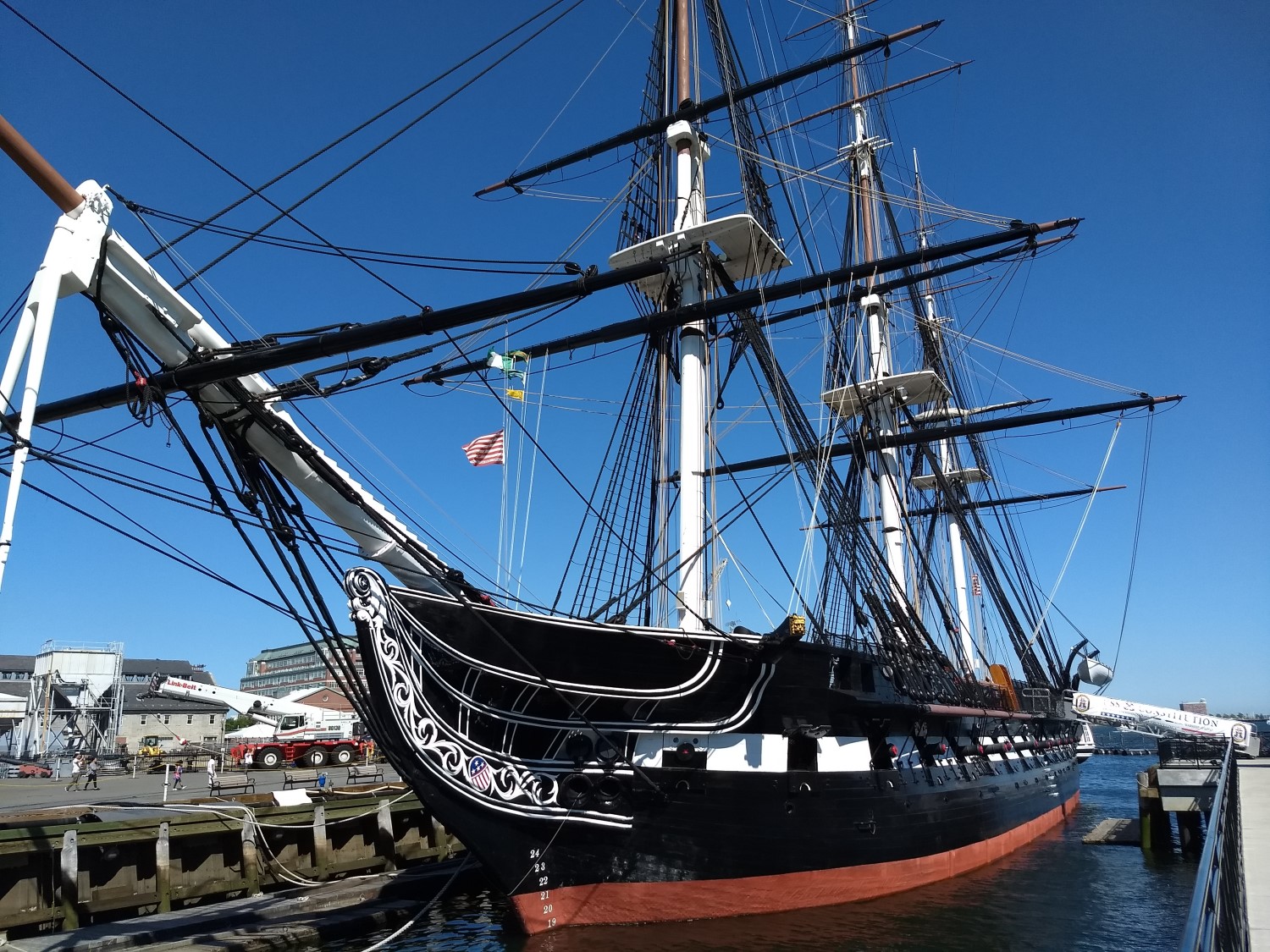
USS Constitution, a sailing frigate1
In the aftermath of the Napoleonic Wars, cruising missions became even more important. As imperialism kicked into high gear, increasing numbers of ships were needed to police the growing network of colonies, protectorates, and commercial interests. These were mostly fairly small and slow, but had sufficient armament for service on the far-flung naval stations that dotted the globe.2 However, Britain's enemies had noted her dependence on seaborne commerce, and soon began to build large, fast frigates to raid her shipping, most notably the American Wampanoag class. The British responded by building similar ships to protect their commerce. All of these vessels were unarmored, as they had to combine big engines, lots of coal, and reasonable firepower into a single hull. Sails remained vital, thanks to the high fuel consumption of early steam engines and the lack of coaling stations in much of the world.
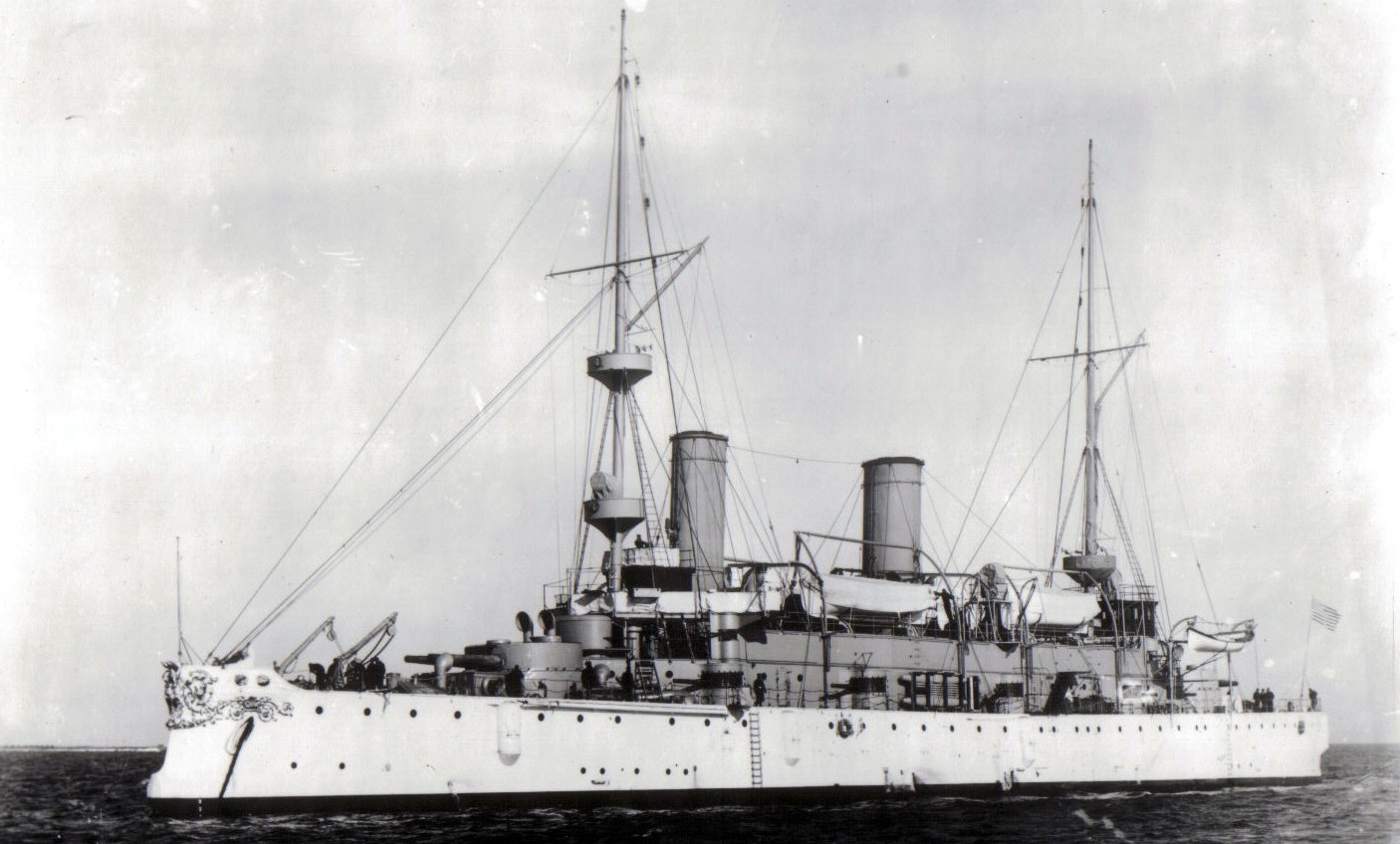
Protected cruiser Olympia, flagship of Admiral Dewey during the Spanish-American War3
By the 1870s, technology had reached the point that it was possible to build a cruiser with sufficient speed to evade battleships and protection beyond that provided by coal bunkers. The first of these were known, obviously, as armored cruisers. Their armor scheme was essentially that of a battleship in miniature, with an armored belt and protective deck. The first armored cruisers were still very large and expensive, and around 1880, a different scheme was developed, producing the protected cruiser. These ships had no belt, with the entirety of the protection provided by the deck. The deck began beneath the waterline, then sloped up to provide more space underneath and some measure of protection for the ship's stability in the event of damage, aided by the use of water-excluding material like coal or cork outboard near the waterline. At about this time, the compound steam engine allowed sails to be discarded, and the design, also known as the Elswick Cruiser after the yard that built a number of the ships for both the RN and export customers, became common. The ships were primarily armed with guns of around 6",4 in some cases backed up by a few bigger guns, and they dominated the world's cruiser fleets for the next two decades. The British stopped building armored cruisers entirely, splitting their cruiser force into three classes. First-class cruisers were big ships, in some cases rivaling contemporary battleships in size, designed to hunt commerce raiders. Second-class ships might be used as scouts or for trade protection, while third-class cruisers were intended for policing the Empire.
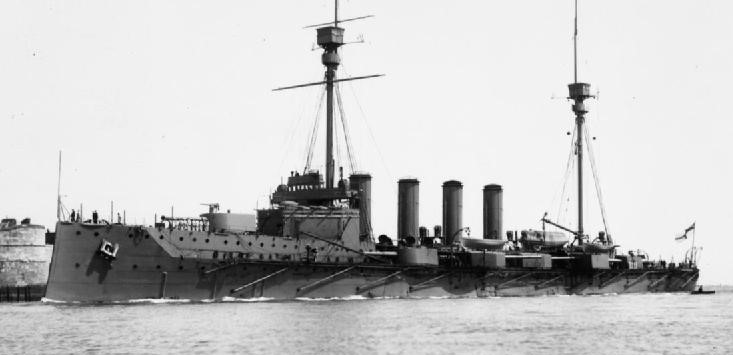
HMS Warrior, one of the last armored cruisers
By 1895, two main factors had conspired to make the armored cruiser viable again. First, improvements in armor meant that a viable belt could be fitted to a cruiser of reasonable size, and QF Guns threatened to destroy the water-excluding material that had previously defended the stability of the protected cruisers. The result was a huge building race of the new armored cruisers, each the size and cost of a contemporary battleship, as France and Russia built ships to attack British trade, and the British struggled to build enough ships to drive them off, while also preserving some to form a fast wing of the battle fleet. Ultimately, this financial strain was one of the key reasons Jackie Fisher was brought to the Admiralty. While Dreadnought is the most famous of the changes he brought to that hallowed institution, in many ways, his more significant change was a new system for directing raider-hunting cruisers. To run down such raiders, he designed a successor to the existing armored cruisers, the battlecruiser.
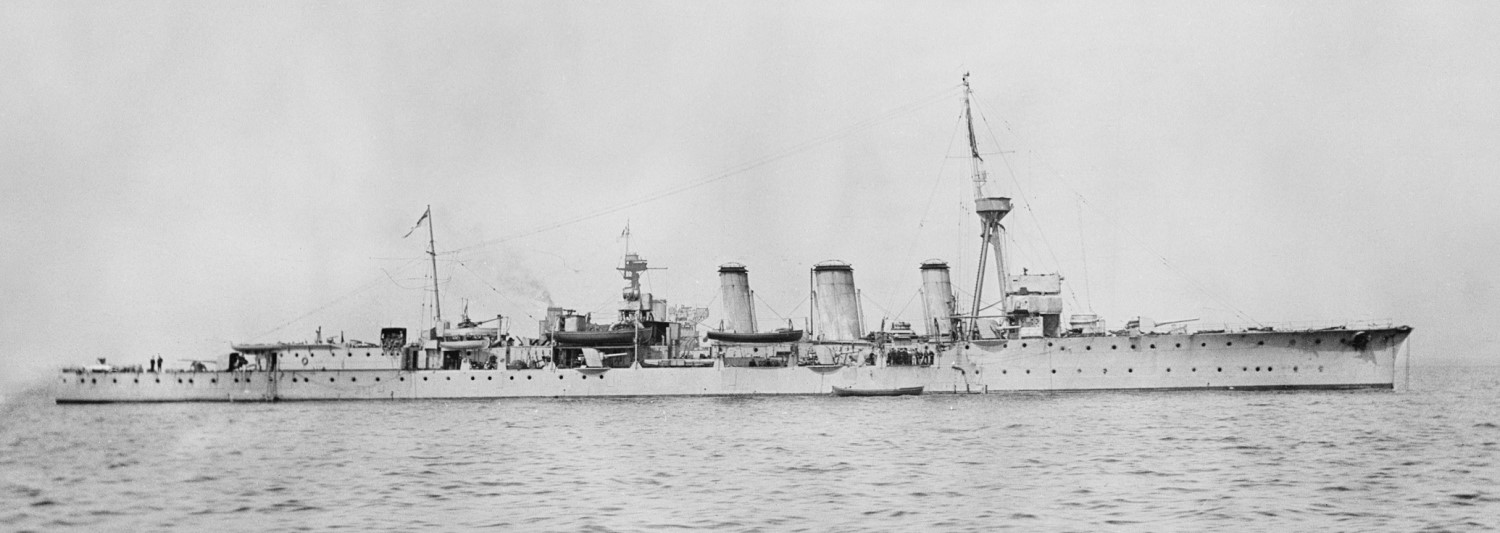
Light cruiser HMS Caroline5
But neither the armored cruiser nor the battlecruiser could be procured in sufficient numbers for all of the duties required of cruisers. Trade had to be protected from merchant ships armed with light guns, battle fleets needed scouts, and destroyer flotillas had to be led. The result was the light cruiser, a vessel of maybe 5,000 tons with enough armor to be resistant to the light guns of destroyers, enough speed to keep up with them or close with and escape from an enemy battle fleet, and armed with 4"-6" guns in individual mounts. These ships were built in large numbers during the war, and some of the larger and more powerful examples set the stage for what came next.
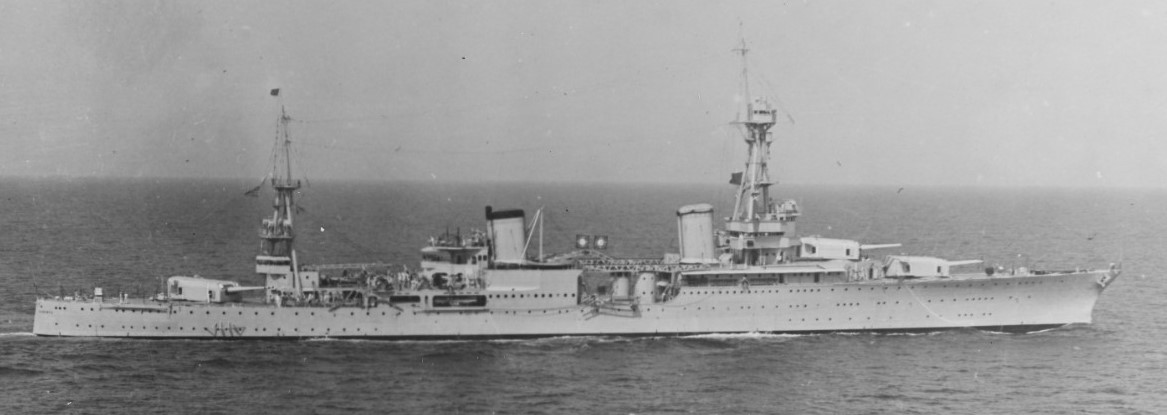
USS Augusta, a fairly typical treaty cruiser
The naval situation changed radically in the immediate postwar years. The Washington Naval Treaty had defined a new class of cruiser, of 10,000 tons and armed with 8" guns. These were the most powerful warship that could be built in the 1920s, and they introduced a new standard of speed, around 30 kts, and a new level of firepower, with 8-10 8" guns in turrets. However, to fit in everything on the limited tonnage allowed under the treaty, designers had to eschew armor almost entirely, and the ships were described as "eggshells armed with sledgehammers". Later vessels were somewhat better in this regard, but all of them were rather cramped. Initially, there was some confusion about the nomenclature around these ships, but eventually, "heavy cruiser" became the standard, particularly as the armored cruisers were sent to the scrapyard.
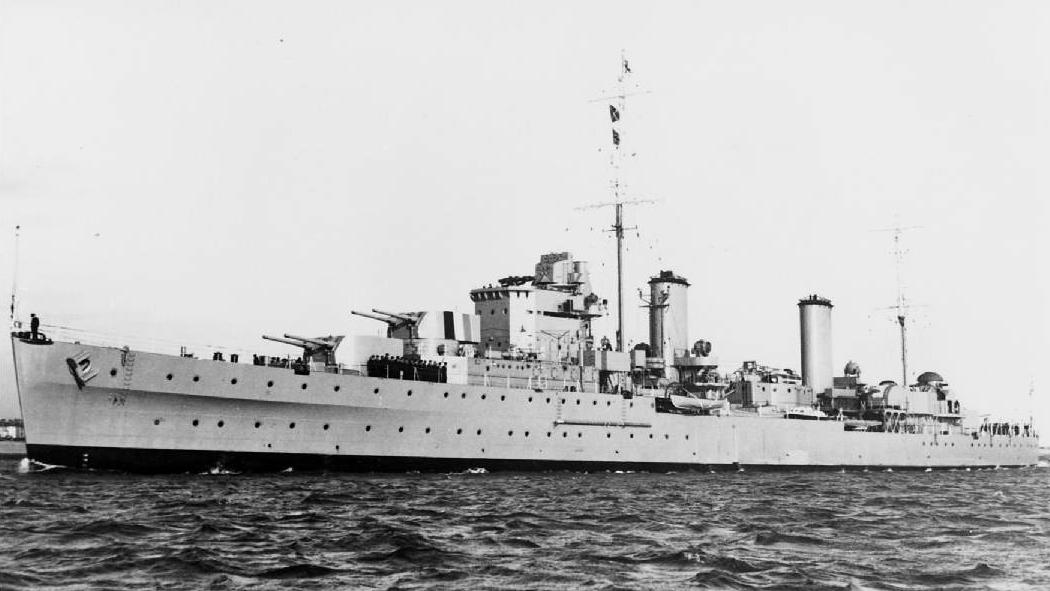
Light Cruiser HMS Aurora
Later naval treaties made repeated attempts to limit the size of cruisers, with varying degrees of success. The 1930 London Naval Treaty kept the size limit at 10,000 tons, but reduced the maximum allowable gun caliber to 6.1". The resulting ships were dubbed light cruisers, although they were rather different from the light cruisers of the first two decades of the century, being essentially heavy cruisers with lighter armament. At British insistence, the 1936 treaty saw tonnage reduced to 8,000, making the final prewar generation of 6" cruisers somewhat smaller. Even smaller were other cruisers, such as the American Atlantas and British Didos, which were armed with dual-purpose guns in the 5" range, intended to support destroyers and fight foes both in the air and on the surface.
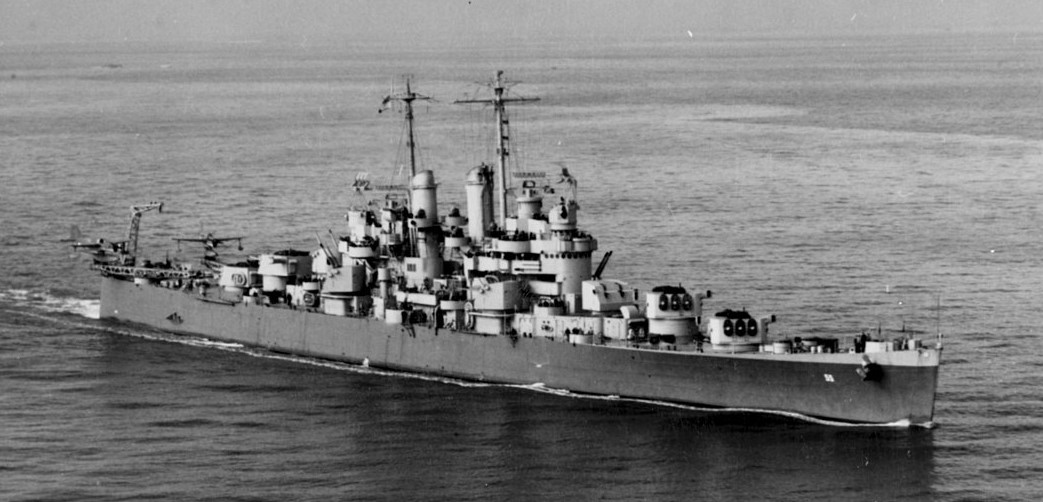
USS Cleveland in 1942
When war broke out, the treaties were rendered moot, but only the United States had enough time to actually build post-treaty cruisers. The Cleveland class light cruisers were the most numerous class of cruisers ever built, with 27 units completed, and another 9 converted into aircraft carriers. They were 10,000-ton cruisers, and the design formed the basis of the heavy cruisers of the Baltimore class, which also saw extensive service in the war against Japan.
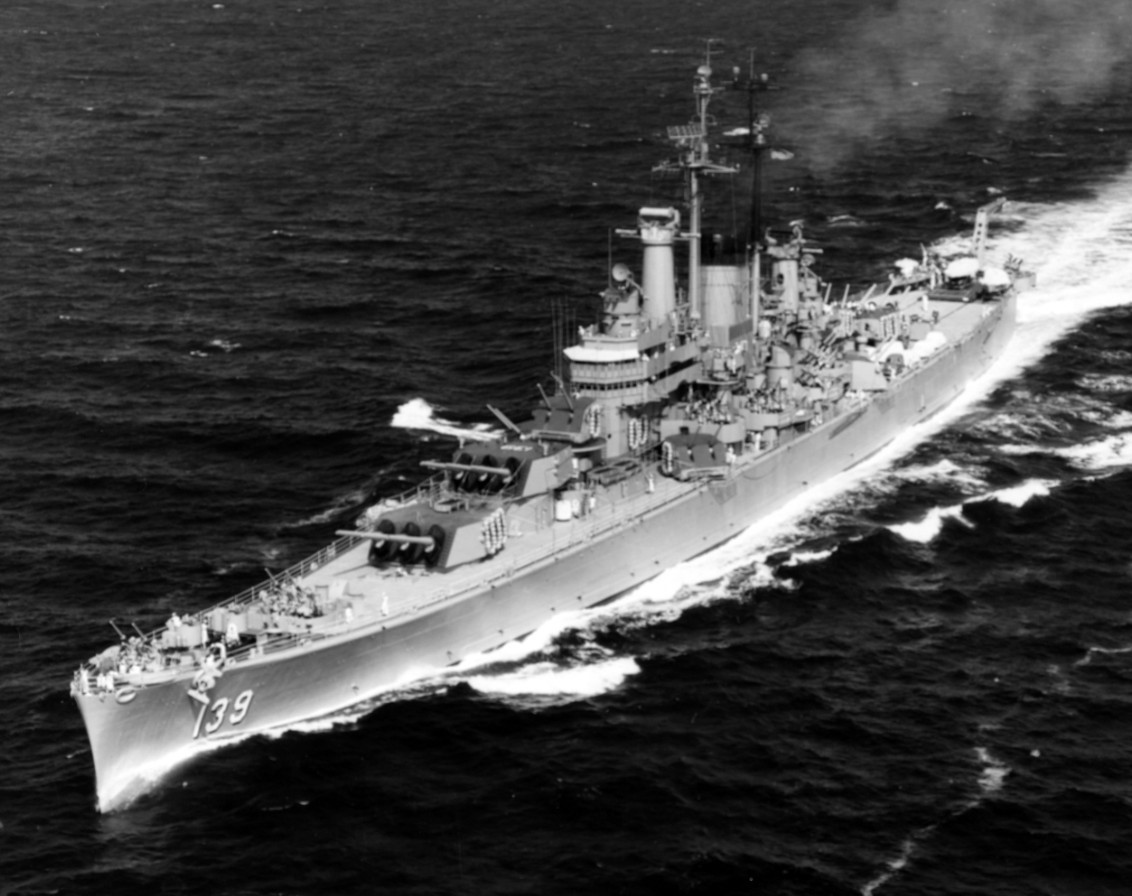
Salem of the Des Moines class6
Only a few gun cruisers were completed after the end of the Second World War. The most numerous were the Soviet Sverdlov class, designed to raid NATO commerce. These were a major threat to Western carriers and lighter surface ships, although the development of all-weather carrier strike aircraft eventually rendered them obsolete. But the best were the three heavy cruisers of the Des Moines class, armed with semi-automatic 8" guns designed to mimic the rate of fire of a 6" gun and built to reflect the full lessons of the war.
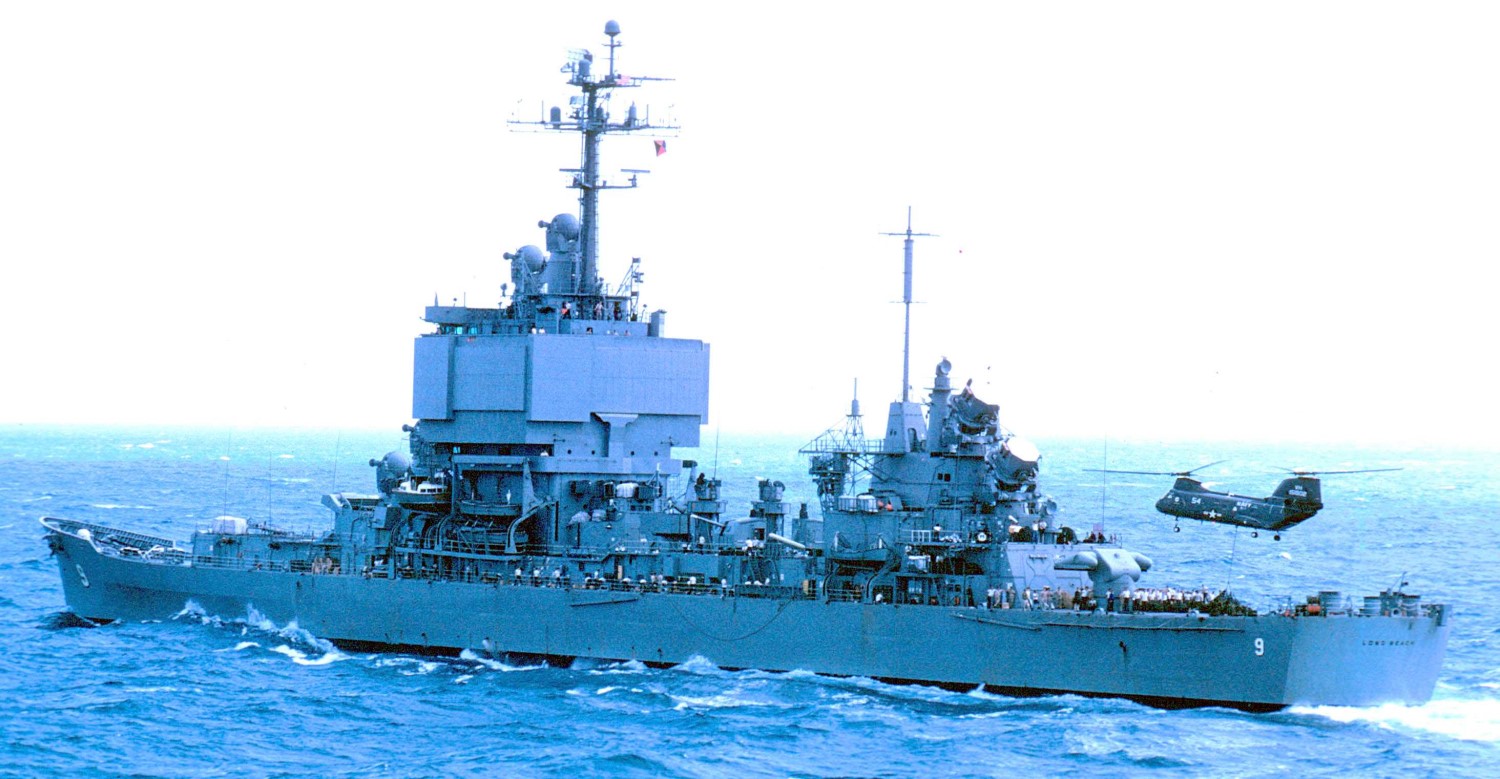
Long Beach
The guided missile arrived with the Cold War, and the vast fleet of war-surplus cruisers were the obvious platform to allow the USN to take them to sea. Many were converted to carry various missiles, allowing the cruisers to live on until the 1970s. The United States built one more cruiser, Long Beach, equipped with nuclear power. But she was the last of the classic cruisers, descended from the sailing frigates.
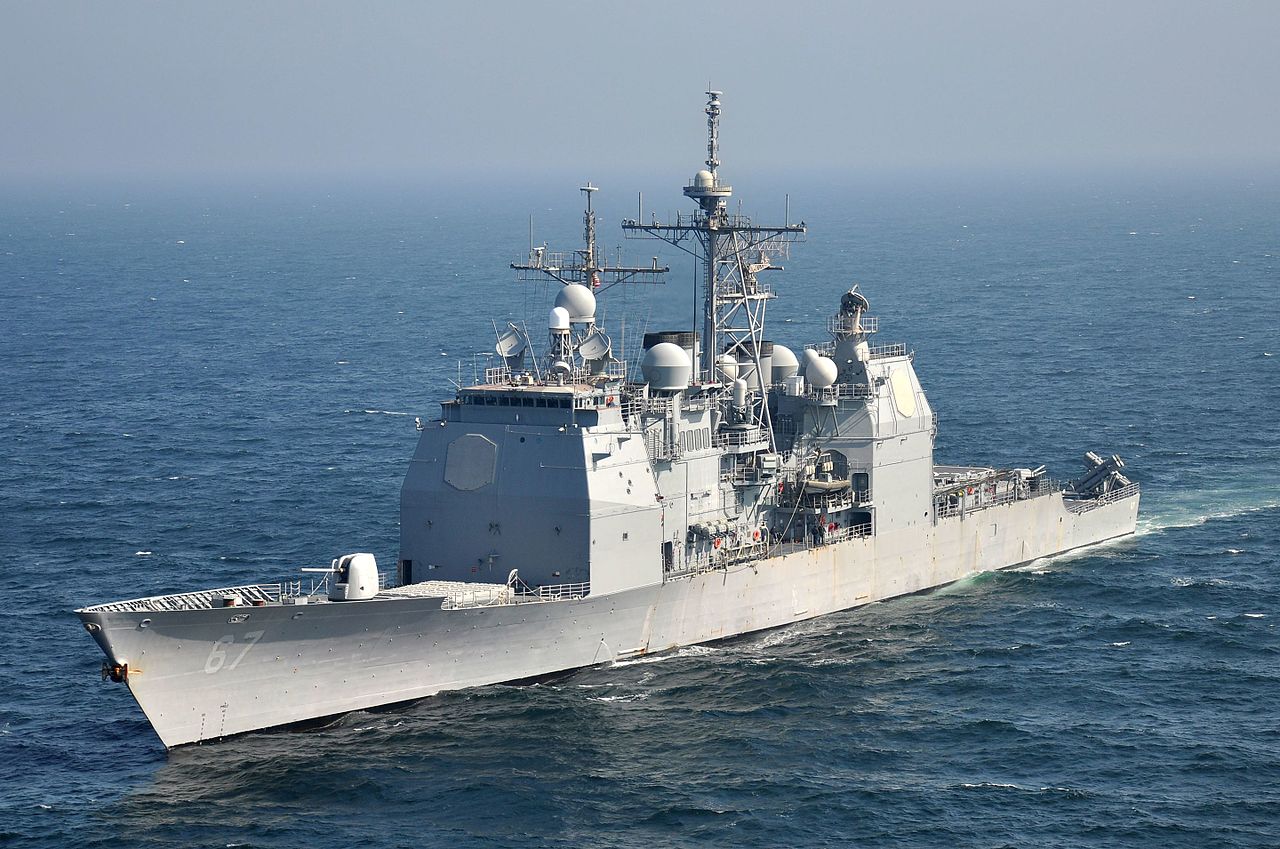
USS Shiloh, of the Ticonderoga class
In the aftermath of WWII, cruisers were seen as simply too expensive, and enlarged destroyers were built instead. Most navies called these cruisers,7 but they were initially significantly smaller than the cruisers of WWII. During the course of the Cold War, the new missile cruisers grew, and today, the surviving ships are approximately the same size as their gun-armed predecessors. However, none have been built in the past quarter-century, and it appears that "destroyer" has taken over as the term for the top end of the surface combatant range.
1 Author's photo. ⇑
2 An example of the work these ships did is when Shah and Amethyst fought the rogue Huascar. ⇑
3 Olympia is now a museum ship in Philadelphia. ⇑
5 Today, Caroline is a museum ship in Belfast, Northern Ireland. ⇑
6 Salem is now a museum ship in Quincy, Massachusetts. I'd encourage you to check her out. ⇑
7 The exception was the USN, who called them frigates until 1975, when they were reclassified as cruisers. ⇑

Comments
Is there any particular reason the Ticonderoga-class is so godawfully ugly? It looks like someone started with a good-looking ship, sheared the superstructure off, and mounted a small office building in its place.
@quanticle
IIRC, the flat surfaces contain the radar antennas, and form very much follows function in warships.
@quanticle
You're not wrong about how the class got its shape, actually. The Ticos were based on the Spruance-class hull. The Spru-cans were essentially about 4,000 tons of ship in a 7,000 ton hull (this makes more sense than you might think), but the Ticos (originally the low-end Aegis platform) needed to be north of 9,000 tons. And that also meant they needed lots of extra internal volume, which is often the biggest limiting factor in modern warships, hence the big deckhouse. The aesthetics aren't helped by the fact that the radars are split fore and aft, while in the Burkes they're all in a single deckhouse. The design history of the Ticos is rather convoluted, and it's been a while since I looked into this, so I might have missed something.
I find the story of the 1975 "cruiser" redefinition to be interesting. As I understand it, basically there was a popular complaint that the US was short on cruisers, because lots of other navies had lots of cruisers and the USN had almost none. This was seen as being a sign that the USN was deficient in an important role, and that there was a worrisome "cruiser gap".
This was BS, because the US frigates were more capable than most foreign cruisers, but eventually the USN just threw in the towel and basically said "Fine, you guys want cruisers? Here, have a bunch of cruisers. Cruisers for everyone! Now bugger off and let the professionals get back to work already."
https://en.wikipedia.org/wiki/UnitedStatesNavy1975ship_reclassification
Pretty much, yes. This very much confused me as a child when I found a book on the USN from the early 60s in the local library. (I wish I could remember the title, as I'd like to buy a copy now, but this was almost 20 years ago.) There was a reference to the nuclear frigate Bainbridge, and I, knowing only the modern definition of frigate, said "What idiot put a nuclear reactor in one of those?" It took me years to figure out what they actually meant.
Of course, in retrospect, if the USN of 1975 had been really smart, they'd have used the gap to con Congress into buying them more "cruisers", probably by slightly upscaling their destroyer designs.
The Ticos aren't the best-looking warships, but Long Beach there had better be happy that the IJN's "Pagodas" will for all time prevent her from even being considered for "ugliest WWII/ColdWar warship."
They didn't bother shearing off the original superstructure before putting the office building on.
The explanation there is that Long Beach had an early phased array. It was the same one originally fitted to Enterprise, and there's a reason that her forward superstructure bears more than a passing resemblance to Big E's island.
I figured the "billboards" were phased arrays, which is why I didn't mention that it looks like it belongs on Times Square, not a ship.
I imagine that it looks a lot better on Big E, where it's in proportion to the ship.
"escort customers" should probably be "export customers"
Did you forget about Truxtun -- yes, a one off and a little on the light side (8500 tons IIRC)? How about the California class and the later Virginia class? These latter six ships were well over 10,000 tons displacement and all nuclear powered. I know originally they weren't classified as cruisers, but their displacement is certainly far beyond what destroyers or destroyer leaders would have been.
The reason I bring them up is because they are often overlooked. I wanted to serve on one of these when I joined the Navy in 1977. I was a nuke but wouldn't volunteer for subs (claustrophobic) and didn't want to be on a CVN. Alas, it was not to be.
Those are implicitly covered in the last paragraph. They were ultimately from the destroyer lineage if you look closely at the design history, even though the USN called them cruisers. I agree that they're interesting ships, but under my standards (which are heavily Friedman-influenced) they're destroyers, not cruisers.